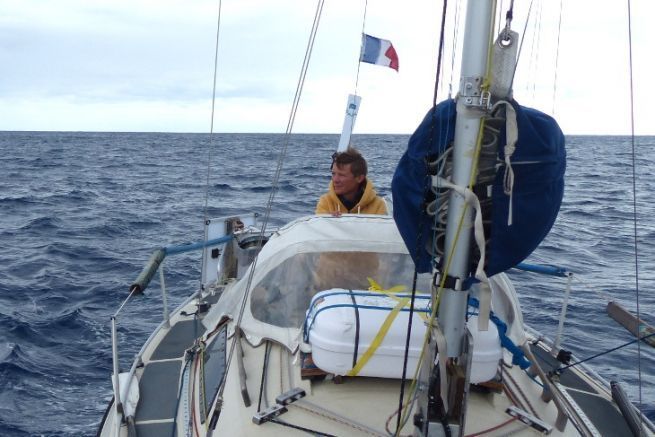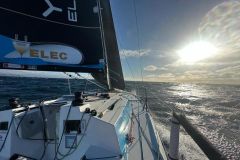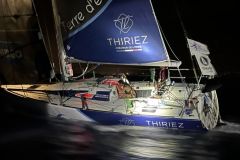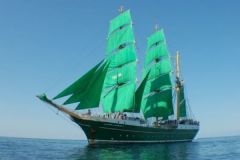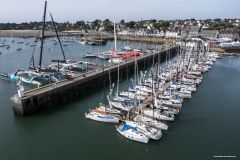How to transform a frail transportable sailboat into a real small offshore cruiser? What equipment should you take on board before a voyage of several months on a boat designed for escapades of a few days? How to best occupy this handful of square meters while guaranteeing an optimal level of comfort and safety in order to face the harsh conditions of the ocean? We had a year to weigh all these questions and prepare our brave Nordkyn, a 1986 Etap 23, for its new adventure that was supposed to take it across the Bay of Biscay, to the islands of Madeira, the Canaries and why not Cape Verde.
The choice of the wind speed regulator
Given its past voyages in the northern seas (Scotland, Spitzbergeuros), our mount had already been fairly well equipped by its previous owners. We already had on board an electric autopilot, a SSB receiver and an AIS. The set of sails was almost new, as well as the shrouds and the furler, while the old Yamaha two-stroke engine in the engine room had been replaced by a relatively new four-stroke.
In the months leading up to our departure, we worked hard to fine-tune this equipment. In addition to the autopilot, we quickly realized the value of the windvane steering system. In the event of a power failure, it offers us the assurance of having a safe solution to get underway without having to steer 24 hours a day. However, very few models are suitable for installation on a small boat. After several months of searching on classifieds websites, we managed to buy an unbreakable Navik Plastimo and with a few tinkerings, it found its place on the transom.
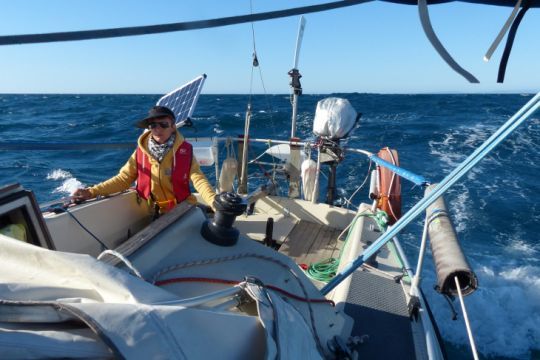
A modified rig for heavy weather
Common sense also dictated that we adapt our rigging to the conditions we were likely to encounter on the open sea. In addition to the installation of a releasable forestay on which we can send a small storm jib, a third reefing band has been added to the mainsail. We really hope to limit the use of it as much as possible, our strategy being to avoid bad weather by choosing our weather windows carefully. In any case, we will be prepared if the occasion should arise. As far as safety is concerned, it goes without saying that we are taking on board all the regulatory equipment for such crossings. In spite of its unsinkable reputation, we have chosen to equip our Etap with a life raft, taking care to choose the most compact model possible. This one found its place under the boom downhaul, while the inflatable dinghy occupies the front deck.
Little need for electricity
We carry no less than three GPS, including a waterproof tablet and a waterproof laptop. Not to mention the Garmin In reach which will allow us, at little cost, to exchange messages via the satellite network with three friends who have agreed to play the role of routers on land. With the SSB, we have more than one string to our bow to check the weather once we are offshore. Finally, thanks to the windvane gear and in the absence of power-hungry appliances, a simple 50-watt solar panel fixed to the aft balcony provides us with total energy autonomy.
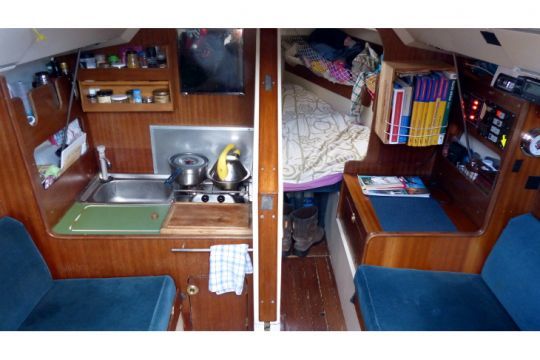
Tips to optimize comfort
As far as comfort is concerned, we have done everything to create a maximum of storage space by using the available space on the cabin walls. Although the Etap 23's layout is already well designed, the objective was to use small tricks to improve it. For example, the table that fits in both the cockpit and the saloon has been sawn in two parts and hinged. This allows us to fold it up to free up space when we put it in place. Finally, after several unfortunate gastronomic experiences in rough seas, we acquired a pressure cooker. This one allows us to spoil our stomachs instead of the cabin floor.
